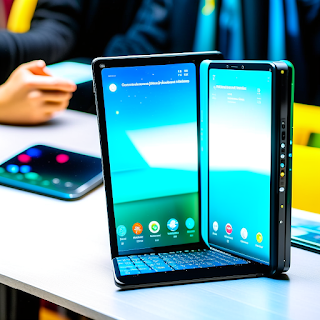Foldable smartphones have generated a lot of buzz in the tech industry. With their ability to transform from a traditional smartphone to a tablet-sized device, they offer a unique and innovative experience. In this blog post, we will explore the pros and cons of foldable smartphones, breaking down the hype surrounding this emerging technology.
The Pros of Foldable Smartphones
1. Increased Screen Real Estate: The biggest advantage of foldable smartphones is the larger display they offer in tablet mode. Users can enjoy a more immersive experience for content consumption, gaming, and multitasking.
2. Portability and Convenience: Foldable smartphones provide the best of both worlds - the convenience of a compact device in smartphone mode and the larger display of a tablet when needed. It eliminates the need for carrying both a smartphone and a tablet.
3. Enhanced Productivity: The extra screen space enables improved productivity. Users can easily work on documents, view multiple apps simultaneously, and have a more efficient multitasking experience.
4. Innovation and Future Potential: Foldable smartphones showcase technological advancements and innovation. They open up possibilities for new use cases and applications, such as foldable e-readers and foldable laptops.
The Cons of Foldable Smartphones
1. Durability Concerns: The folding mechanism and flexible screens can be prone to damage and wear over time. Scratches, creases, and screen malfunctioning are potential issues that may arise.
2. Cost: Foldable smartphones are currently priced at a premium due to their advanced technology. They are significantly more expensive than traditional smartphones and tablets, limiting their accessibility to a broader consumer base.
3. Bulkiness: While foldable smartphones offer the flexibility of a larger display, they can be bulkier and heavier compared to regular smartphones. This may be a concern for users seeking compact and lightweight devices.
4. App Compatibility and Optimization: Since foldable smartphones are still relatively new in the market, app developers are still optimizing their applications to suit the unique form factor. Some apps may not be fully compatible or optimized for foldable displays, leading to a less seamless user experience.
Foldable smartphones have undoubtedly introduced a new era of creativity and possibilities in mobile technology. The increased screen real estate, portability, and enhanced productivity they offer are significant advantages. However, durability concerns, cost, and app optimization issues remain cons to consider. As technology evolves, we can expect these concerns to be addressed, making foldable smartphones an even more compelling choice for consumers.
